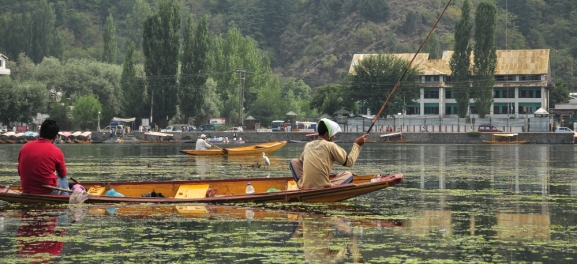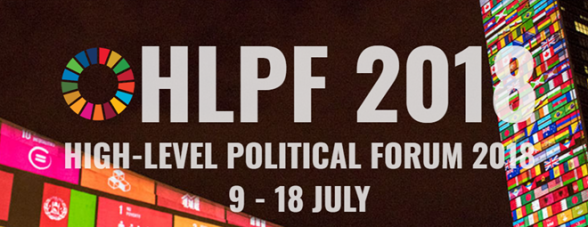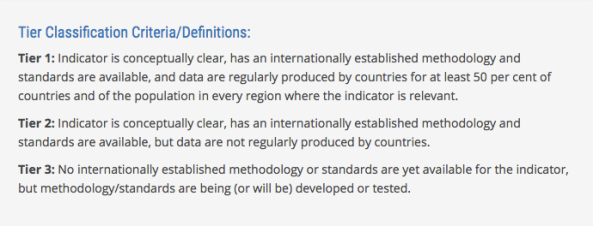Karen González Downs joined the GWP global secretariat in Stockholm, Sweden, in Spring 2019, for what she thought would be a three month internship. But nine months later, she is many experiences richer – and has a new Master thesis, and a new job! This is her story.

Karen Gonzáles Downs (2nd from the right) with her fellow interns.
When I moved from Nicaragua to Germany in 2017 to pursue my Master’s degree in Environmental and Resource Management at the Brandenburg University of Technology Cottbus-Senftenberg, I had a relatively easy plan to graduate and move back home. However, coming from a country with limited opportunities for young professionals, I decided I should take advantage of living in Europe and gain as much professional experience as possible. So, after several months of looking and applying for internships, I was selected to join GWP as an intern for what initially was going to be three months.
I joined the Monitoring and Evaluation (M&E) Unit, with a focus on the Latin America and Caribbean (LAC) region, especially Central America. When I arrived, I had a different vision of what the organisation was about. I had never worked for an international organisation, let alone its global office. However, I was pleasantly surprised by GWP and its uniqueness. It is an organisation that works in 13 regions worldwide, but the team in the Stockholm office is quite small, allowing for less hierarchy and more teamwork.
My experience as an intern ended up being different than the experience of my fellow interns. A few weeks after I started working with the team, I got the opportunity to stay longer, to write my master thesis with my GWP supervisor as my thesis supervisor. Because of this opportunity I ended up extending my three months internship to a nine-month internship/master thesis placement.
The title of my thesis is “Alignment between the Nationally Determined Contributions and water-related sustainable development goals in six Central American countries”. It aims to provide an analysis of the Nationally Determined Contributions (NDCs) of Guatemala, Honduras, El Salvador, Nicaragua, Costa Rica and Panama and its links with water-related Sustainable Development Goals (SDG).
To be honest, it has been a challenge. I have been working on my thesis while continuing as an M&E intern part-time; this has not been easy and sometimes with all that stress and frustration I felt defeated. But what I appreciated the most has been the constant support and encouragement from the team, my fellow interns and my supervisor.
Writing and developing a Master’s thesis can be a slow and challenging process that can be quite lonely. My thesis placement at GWP has been a very enriching experience, I have learned to work independently and on my own terms. I was also able to challenge myself and choose a topic outside my comfort zone and above all, I learned how important it is to ask for help in difficult and frustrating moments.
Yes, my internship in GWP has been a lot of desk work, but it wasn’t boring, and I got to work with and learn from an incredible team. I learned how an organisation like GWP functions and its value contributing to water security and Integrated Water Resources Management (IWRM) implementation. I took the lead to develop a new M&E tool in the form of country factsheets that will allow for an easier understanding of the work that GWP has done for the last 25 years.
All GWP interns got to go as part of the GWP delegation to this year’s Stockholm World Water Week and I never felt like just an intern; we were there as part of GWP and that was encouraging. We also got to attend the monthly staff meeting and quarterly business meeting, and we got to learn what GWP is doing worldwide.
As my last day in GWP is approaching, my first day in my new position is also around the corner. In the next weeks I will leave Sweden for Switzerland to join the Ramsar Convention Secretariat as Assistant Advisor for the Americas. Throughout the whole application process, I have been backed up by constant support from the GWP team. I have had my CV reviewed with great and useful feedback, I received valuable advice on how to best present myself during the interview process, and above all I have had unconditional and uplifting support during the stressful waiting days before getting a positive response from my new employer.
Overall, my experience at GWP has been challenging and rewarding, and living in a beautiful, modern and international city as Stockholm has been a great extra advantage. In the future, If I could change one thing in GWP, it would be the inclusion of more interns from least developing countries. I happened to be the first one from Central America and I hope that I opened the door for more students like me, because yes, we come from less privileged countries and that makes our point of view different than other young professionals – we have unique knowledge and life experiences to share and an international and multicultural organisation like GWP needs that uniqueness.









 At first glance, the 17
At first glance, the 17  GWP published
GWP published  UN-Water has now been working tirelessly to
UN-Water has now been working tirelessly to

